Achieving the perfect game starts with the perfect setup, and this Dartboard Setup Complete Guide will show you precisely how to mount your dartboard at the correct height and distance, ensuring fair play and maximizing your enjoyment. We’ll cover everything from essential measurements and tools to choosing the right location and avoiding common mistakes, guaranteeing a secure and regulation-compliant setup.
⚠️ Still Using Pen & Paper (or a Chalkboard)?! ⚠️
Step into the future! The Dart Counter App handles all the scoring, suggests checkouts, and tracks your stats automatically. It's easier than you think!
Try the Smart Dart Counter App FREE!Ready for an upgrade? Click above!
Essential Measurements for Your Dartboard Setup
Getting the measurements right is the most critical aspect of any dartboard setup. Official regulations set specific standards for both the height of the dartboard and the throwing distance. Sticking to these measurements ensures consistent gameplay and avoids any disputes during competitive matches. These measurements apply to both steel-tip and soft-tip dartboards.
Dartboard Height
The official height, measured from the floor to the center of the bullseye, is 5 feet 8 inches (1.73 meters). It’s crucial to use a reliable measuring tape and ensure the measurement is accurate. Use a level to guarantee the bullseye is perfectly vertical; otherwise, your throws will be consistently off.
Throwing Distance (Oche)
The throwing distance, also known as the oche (pronounced “ockey”), is the distance a player stands from the dartboard when throwing. For steel-tip dartboards, the oche should be 7 feet 9 1/4 inches (2.37 meters) from the face of the dartboard. This is a straight-line distance. For soft-tip dartboards, the distance is slightly longer, typically 8 feet (2.44 meters). Using a simple laser measuring device can help ensure accuracy. You may want to Choose Best Dart Equipment to improve your game.
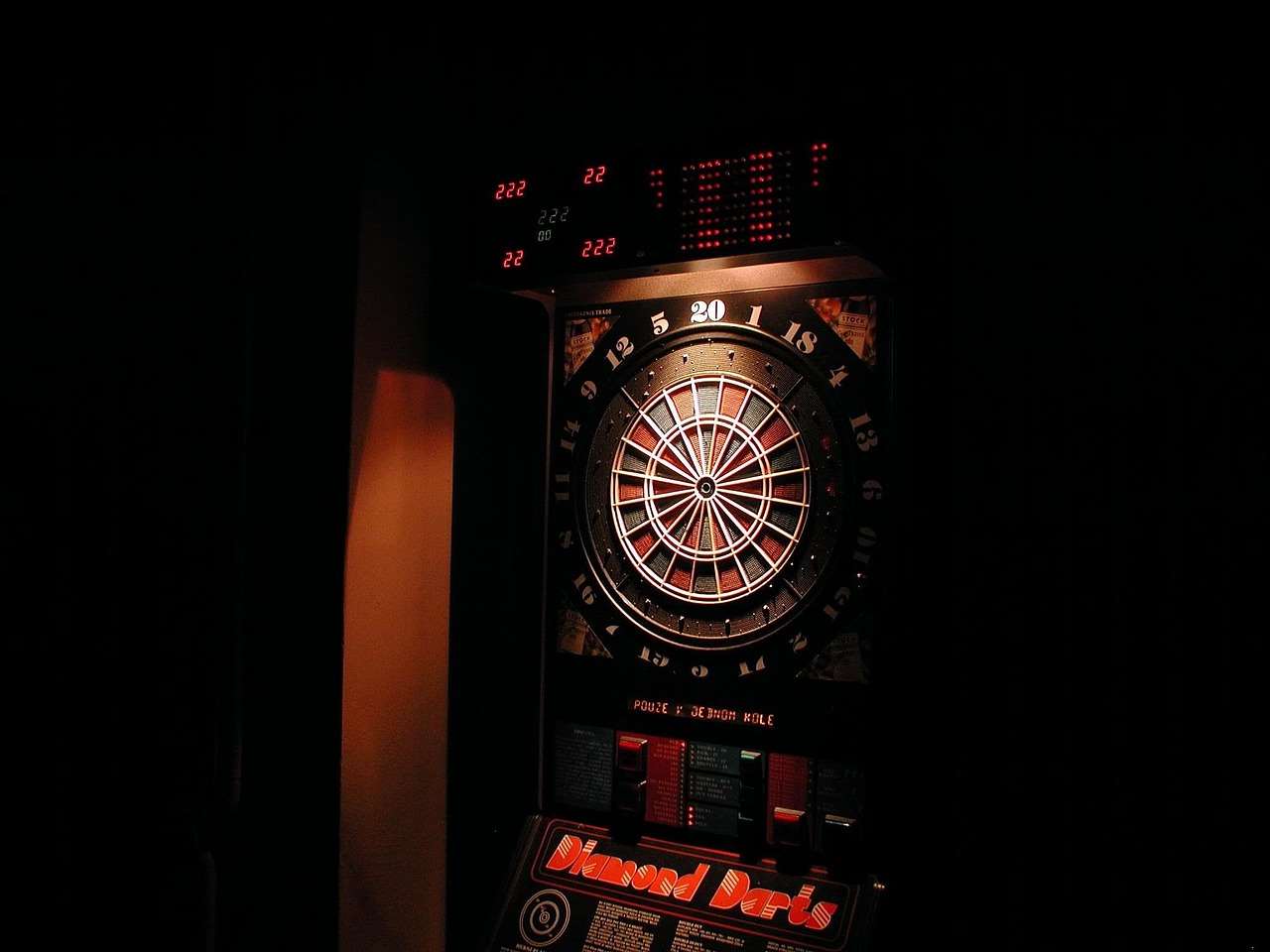
Diagonal Throwing Distance
While the straight-line distance is most commonly used, there’s also a diagonal measurement from the bullseye to the oche. This measurement is 9 feet 7 3/8 inches (2.93 meters). This provides an alternative method to verifying your oche placement, particularly if you have an uneven floor.
Choosing the Right Location
Selecting the ideal location for your dartboard is crucial for both safety and enjoyment. Consider these factors when making your choice:
- Wall Material: A solid wall, preferably brick or concrete, provides the most secure mounting surface. If mounting on drywall, use a backing board or find the studs to ensure stability.
- Space: Ensure ample space in front of the dartboard for players to throw comfortably. Also, consider the space behind the board – a clear area will prevent accidents if darts miss the board.
- Lighting: Proper lighting is essential. Ideally, you want lights positioned above or to the sides of the board to eliminate shadows. Avoid placing the board in a location where glare from windows could be an issue. Consider installing a dedicated dartboard lighting system.
- Safety: Think about foot traffic. Avoid placing the dartboard in a high-traffic area where people could accidentally walk in front of a thrower. A dartboard surround can also protect the surrounding wall and deflect stray darts.
- Minimizing Damage: Darts will inevitably miss the board. Consider using a dartboard surround to protect your wall from stray darts. These surrounds are typically made of soft material like foam or cork. Also, avoid mounting the board near valuable or fragile items.
Tools You’ll Need for a Successful Dartboard Setup
Having the right tools on hand will make the dartboard setup process much smoother and easier. Here’s a list of essential tools:
- Measuring Tape: A good quality measuring tape is crucial for accurately measuring the height and throwing distance.
- Level: A level ensures the dartboard is perfectly vertical, preventing skewed throws.
- Drill: A drill is needed to create pilot holes for mounting screws. Make sure you have the correct drill bit size for your screws.
- Screwdriver: Use a screwdriver (either manual or electric) to securely fasten the dartboard to the wall.
- Pencil: A pencil is used to mark the wall for drilling and placement.
- Stud Finder (Optional): If mounting on drywall, a stud finder helps locate the wall studs for a more secure mounting.
- Dartboard Surround (Optional): A dartboard surround protects the wall from stray darts.
Step-by-Step Dartboard Installation Guide
Follow these steps for a smooth and secure dartboard setup:
- Mark the Location: Use your measuring tape and level to mark the wall at 5 feet 8 inches (1.73 meters) from the floor. This is where the center of the bullseye will be.
- Mounting Bracket Installation: Most dartboards come with a mounting bracket. Position the bracket on the wall at the marked location and use a pencil to mark the screw holes.
- Drill Pilot Holes: Drill pilot holes at the marked screw locations. If mounting on drywall, use a stud finder to locate a stud and screw directly into it. Otherwise, use drywall anchors.
- Secure the Bracket: Screw the mounting bracket securely to the wall using the appropriate screws.
- Hang the Dartboard: Align the dartboard with the mounted bracket and gently push it into place. Most dartboards have a rotating mechanism that allows you to easily adjust the board if needed.
- Measure the Oche: Measure 7 feet 9 1/4 inches (2.37 meters) from the face of the dartboard and mark the location of the oche on the floor.
- Secure the Oche: Place a physical marker at the oche location. This could be a piece of tape, a wooden plank, or a commercially available oche mat.
- Test and Adjust: Throw a few darts to test the setup. Make any necessary adjustments to the board’s position or the oche to ensure comfortable and accurate gameplay.
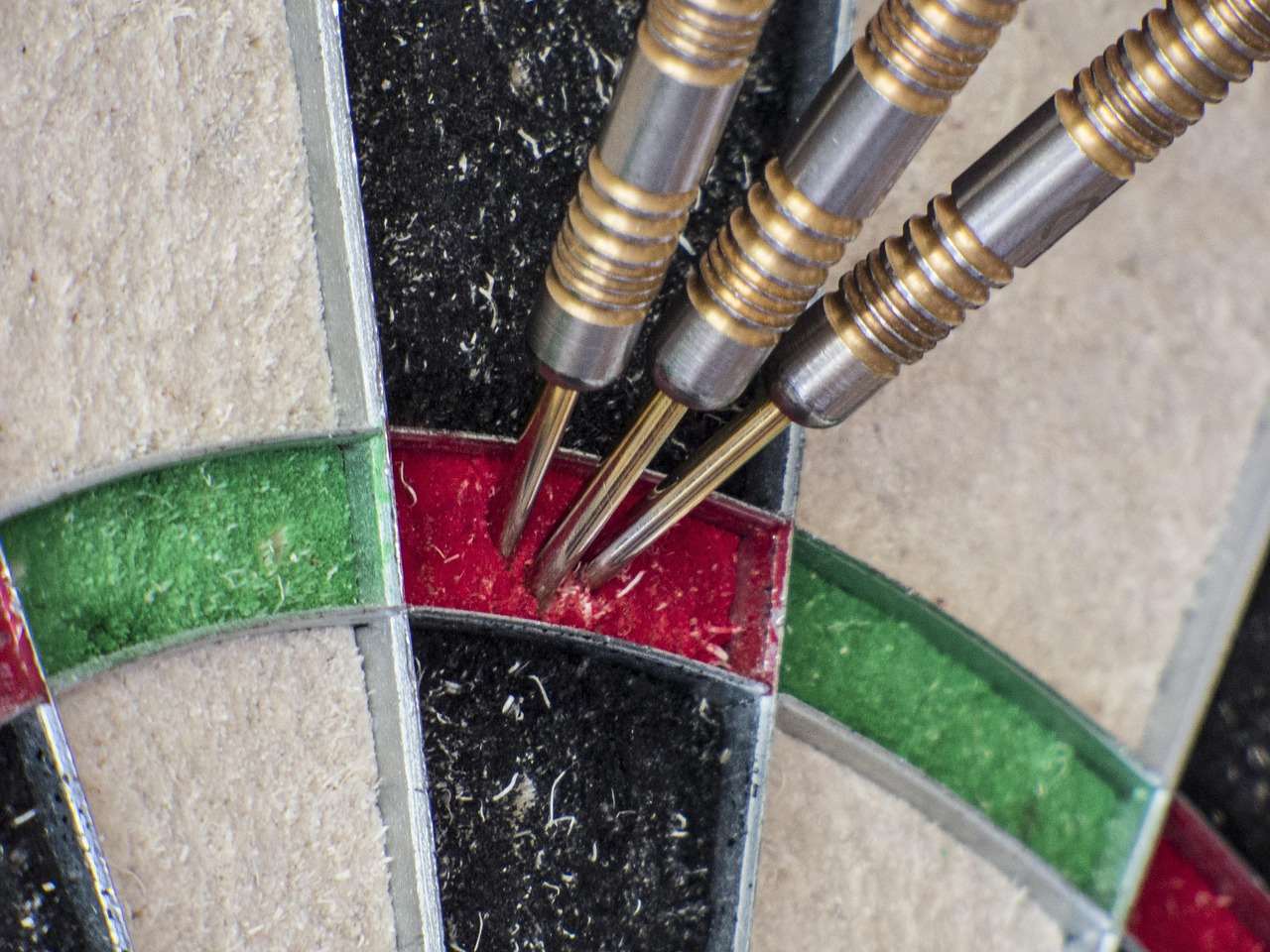
Ensuring Level and Stability
A wobbly or unlevel dartboard can significantly impact your game. Here’s how to ensure your board is stable and perfectly level:
- Check for Wobbling: After mounting the dartboard, gently push on it to check for any wobbling. If it wobbles, tighten the screws or use shims to stabilize it.
- Use a Level: Use a level to check the vertical alignment of the bullseye. Adjust the dartboard’s position until it is perfectly level. Many dartboards have a rotating mechanism that allows for fine adjustments.
- Secure the Mounting: Ensure the mounting bracket is securely attached to the wall. If the bracket is loose, the dartboard will be unstable. Use longer screws or drywall anchors for a more secure hold.
Common Dartboard Setup Mistakes to Avoid
Even with careful planning, some common mistakes can derail your dartboard setup. Here’s what to watch out for:
- Incorrect Measurements: Double-check your measurements to ensure the dartboard height and throwing distance are accurate. Even a small error can affect your game.
- Insecure Mounting: A loosely mounted dartboard is a hazard. Make sure the mounting bracket is securely attached to the wall.
- Poor Lighting: Inadequate lighting can create shadows and make it difficult to see the board. Invest in proper lighting to improve visibility.
- Ignoring Wall Material: Mounting a dartboard directly on drywall without proper support can lead to instability and damage. Use a backing board or find the studs.
- Neglecting Safety: Failing to consider safety can lead to accidents. Ensure the area around the dartboard is clear and use a dartboard surround to protect the wall.
Dartboard Maintenance and Care
Proper maintenance will extend the life of your dartboard and keep it in top playing condition. Here are some tips:
- Rotate the Board: Regularly rotate the dartboard to evenly distribute wear. This prevents certain sections from becoming overly worn.
- Remove Darts Properly: Avoid pulling darts straight out of the board. Instead, twist them slightly as you remove them to prevent damage to the sisal fibers.
- Keep it Clean: Use a soft brush or cloth to remove any dust or debris from the dartboard. Avoid using water or harsh chemicals.
- Humidity Control: Excessive humidity can damage the sisal fibers. Keep the dartboard in a dry environment.
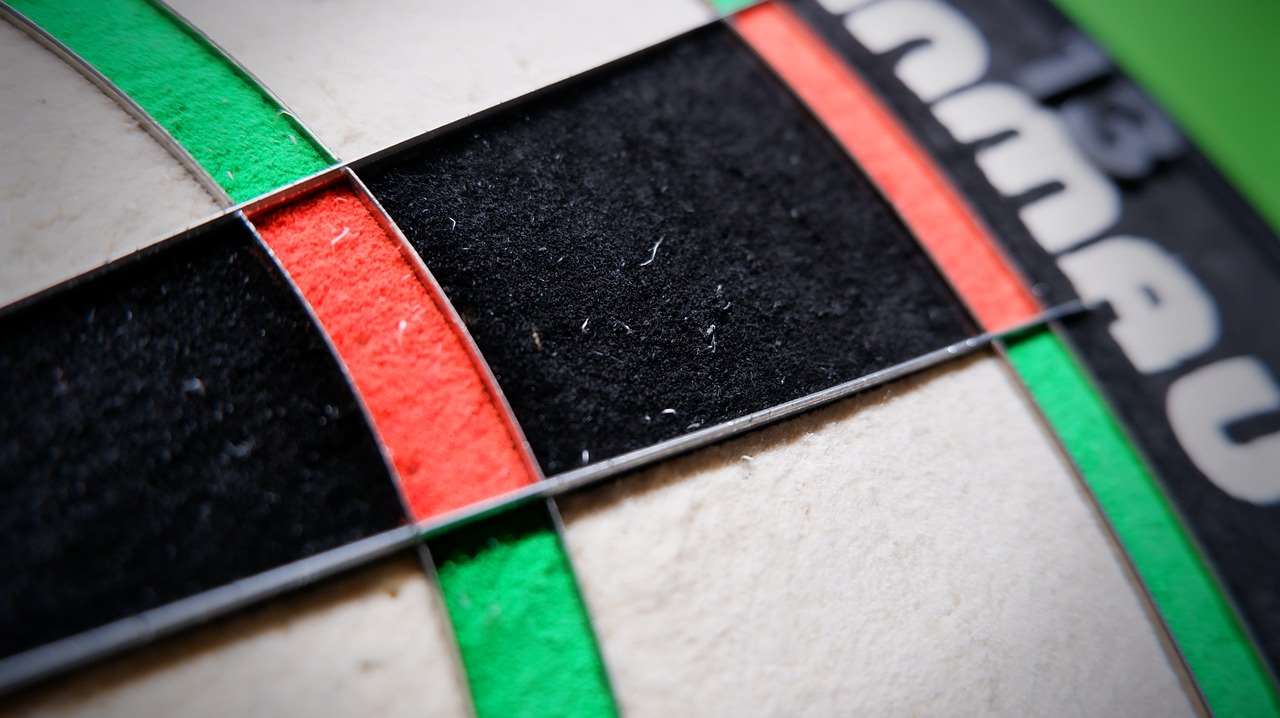
Advanced Tips for Optimizing Your Dartboard Setup
Beyond the basics, these advanced tips can further enhance your dartboard experience:
- Custom Oche: Consider creating a custom oche that is perfectly tailored to your throwing stance. This can improve your consistency and accuracy.
- Soundproofing: If you’re concerned about noise, consider soundproofing the wall behind the dartboard. This can be done with acoustic panels or sound-dampening foam.
- Electronic Scoring: An electronic scorer can automate the scoring process and provide real-time feedback on your performance.
- Dartboard Lighting: Investing in a good dartboard lighting system can drastically improve visibility. Look for systems that provide even, shadow-free illumination.
Understanding Different Dartboard Types
While the setup principles remain similar, understanding the nuances of different dartboard types (steel-tip vs. soft-tip) can be beneficial. You might consider exploring Best Budget Darts For Beginners.
Steel-Tip Dartboards
These are the traditional type, made of tightly packed sisal fibers. They require steel-tip darts. As we mentioned before, the throwing distance for steel-tip boards is 7 feet 9 1/4 inches (2.37 meters).
Soft-Tip Dartboards
Designed for use with plastic-tip darts, these boards have small holes that the darts insert into. The throwing distance for soft-tip boards is typically 8 feet (2.44 meters), but always check the manufacturer’s recommendations.
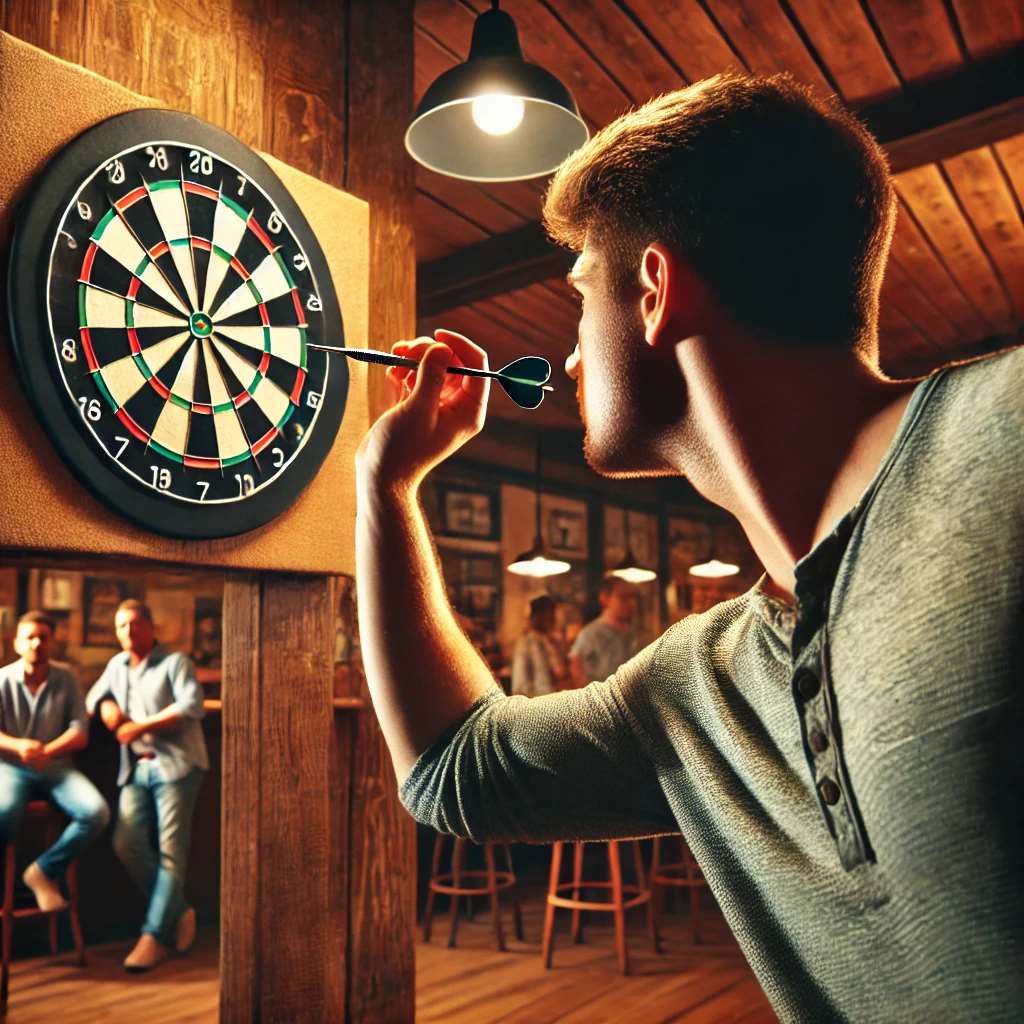
Finding Professional Dartboard Installation Services
If you’re not comfortable tackling the dartboard setup yourself, consider hiring a professional handyman or installer. They have the experience and tools to ensure a secure and accurate installation. Search online for “dartboard installation services near me” to find local options.
Troubleshooting Common Dartboard Problems
Even with a perfect setup, you might encounter occasional problems. Here’s how to troubleshoot some common issues:
- Darts Bouncing Out: This can be caused by dull dart points or a worn-out dartboard. Sharpen your dart points or replace the dartboard if necessary.
- Dartboard Rotating: If the dartboard keeps rotating, tighten the mounting bracket or use shims to secure it in place.
- Uneven Wear: If certain sections of the dartboard are wearing out faster than others, rotate the board more frequently.
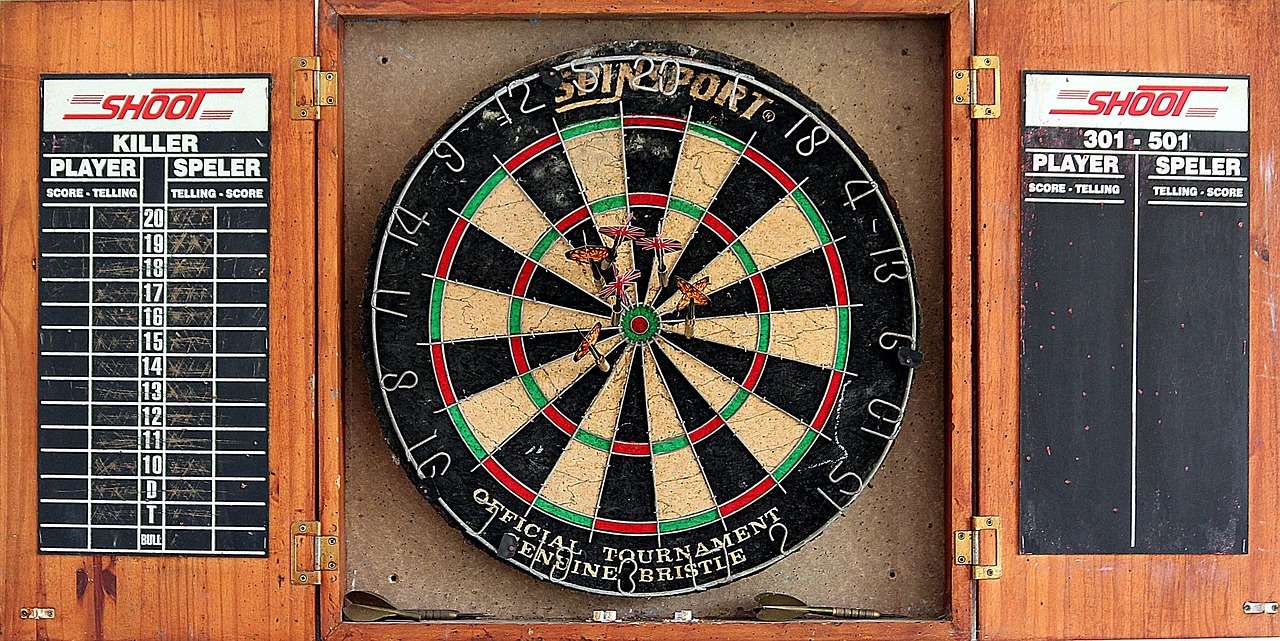
Final Thoughts: Achieving Dartboard Perfection
Setting up your dartboard correctly is a critical first step towards improving your game and maximizing your enjoyment. By following this Dartboard Setup Complete Guide and paying attention to detail, you can create a playing environment that is both safe and conducive to success. Don’t be afraid to experiment with different setups until you find what works best for you. And remember, practice makes perfect!
Time to Set Up Your Dartboard!
With this Dartboard Setup Complete Guide, you’re now equipped with the knowledge to create the perfect setup. Get your tools ready, follow the steps, and enjoy countless hours of dart-throwing fun. Now that you know how to setup a dart board consider the Are Premium Darts Worth It?
Happy Darting!
Hi, I’m Dieter, and I created Dartcounter (Dartcounterapp.com). My motivation wasn’t being a darts expert – quite the opposite! When I first started playing, I loved the game but found keeping accurate scores and tracking stats difficult and distracting.
I figured I couldn’t be the only one struggling with this. So, I decided to build a solution: an easy-to-use application that everyone, no matter their experience level, could use to manage scoring effortlessly.
My goal for Dartcounter was simple: let the app handle the numbers – the scoring, the averages, the stats, even checkout suggestions – so players could focus purely on their throw and enjoying the game. It began as a way to solve my own beginner’s problem, and I’m thrilled it has grown into a helpful tool for the wider darts community.